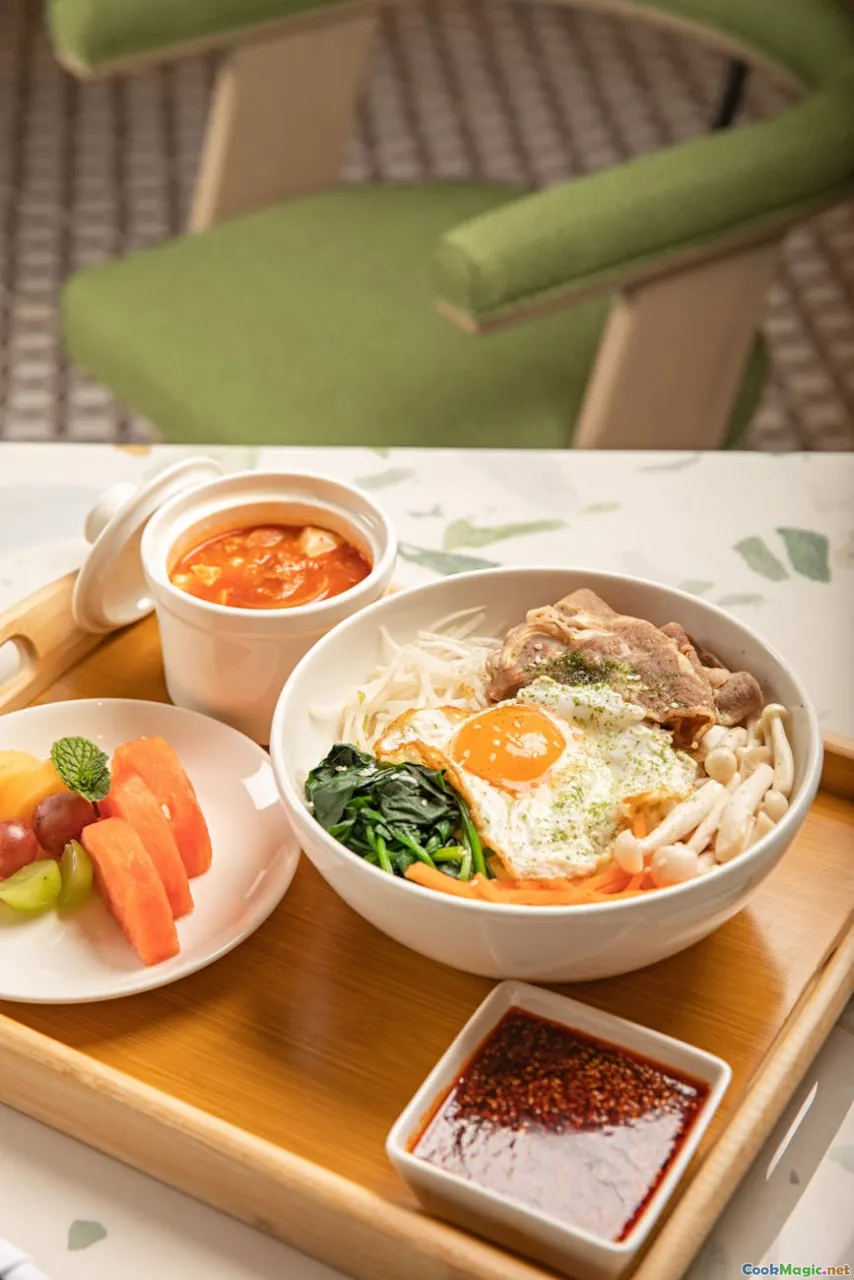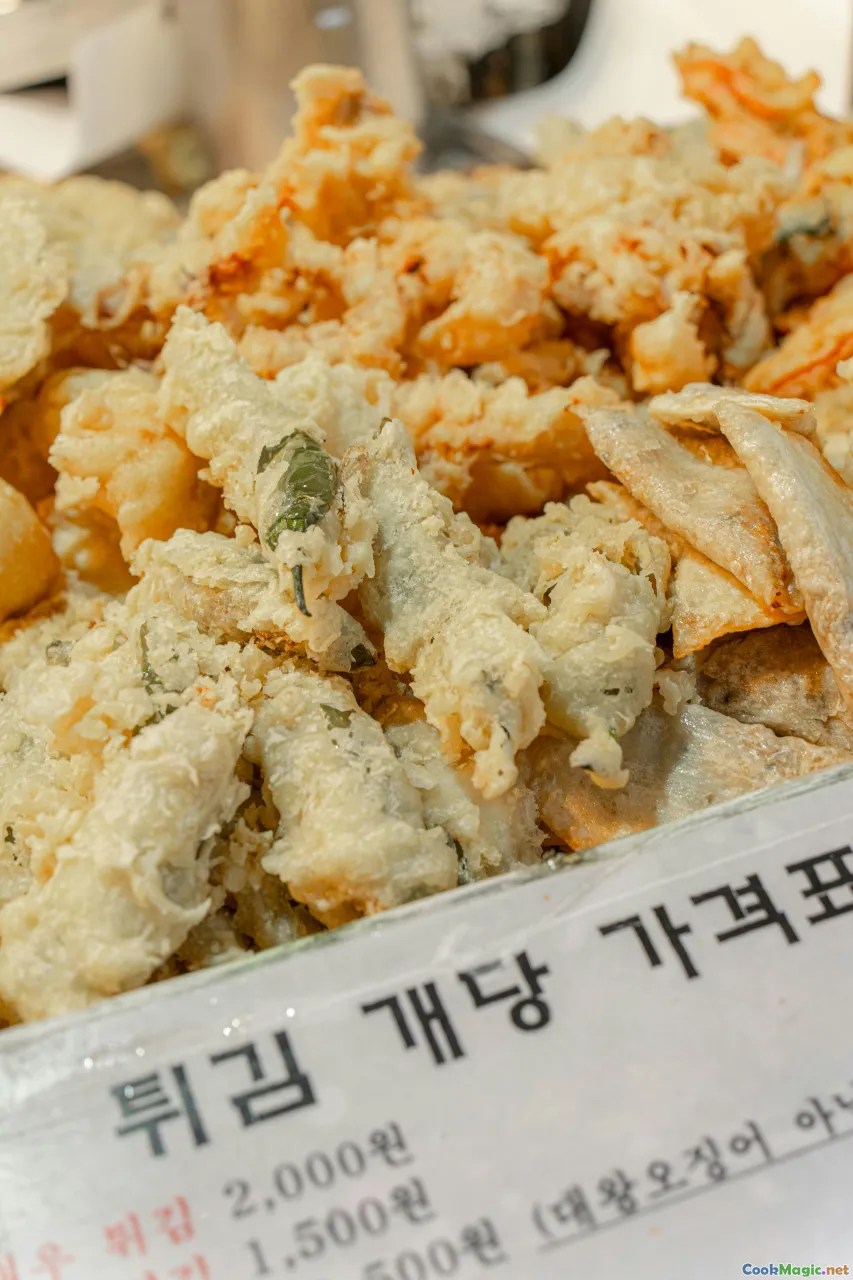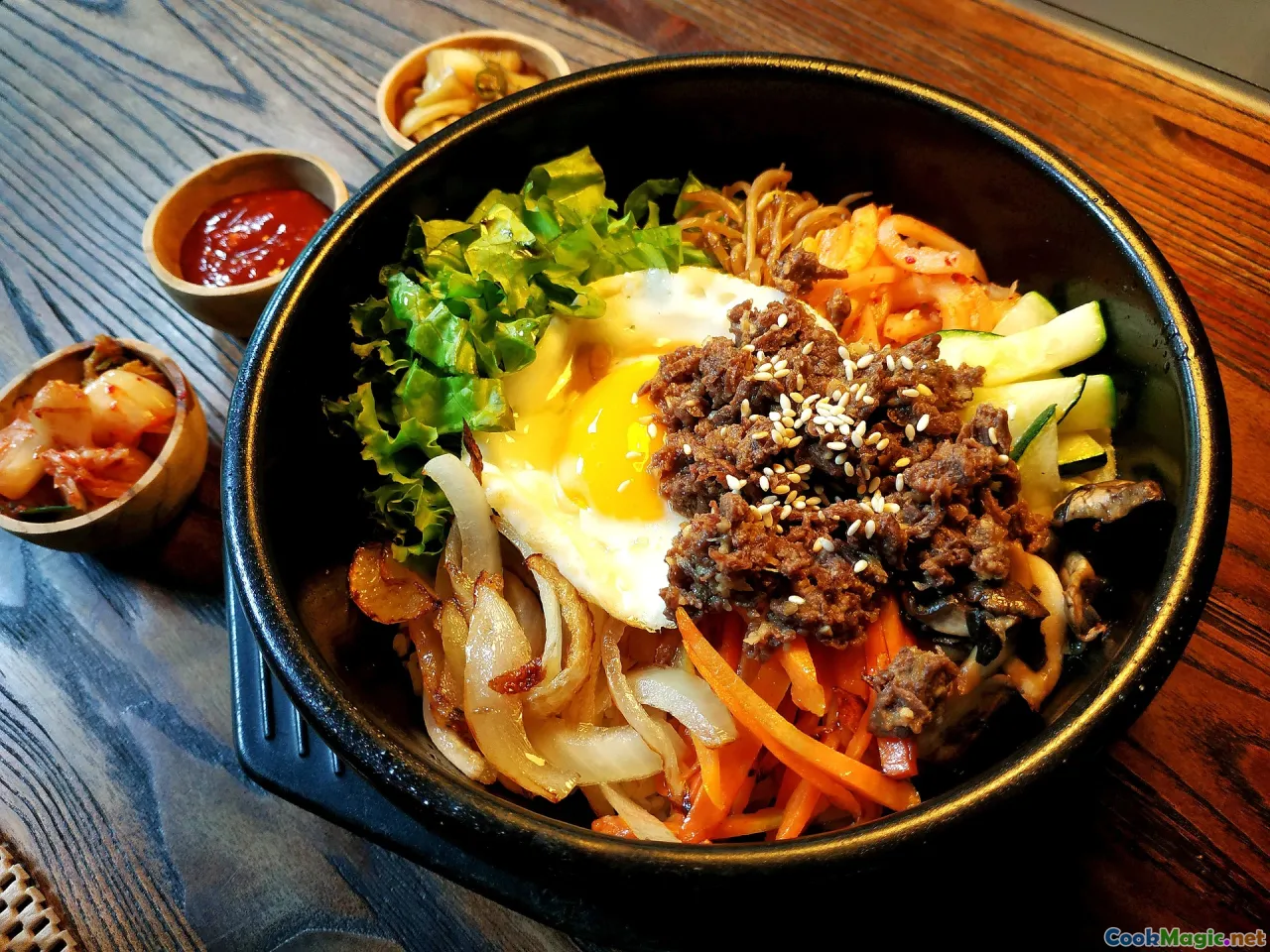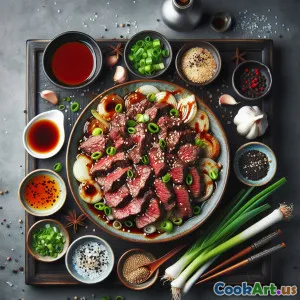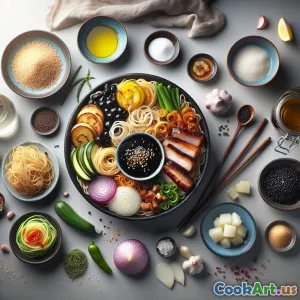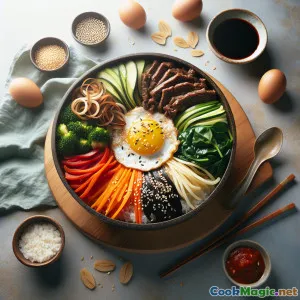
Delicious Korean Bibimbap: A Colorful Rice Bowl
(0 Reviews)Ingredients
-
2 cups Cooked Rice
(Use short-grain rice for authenticity)
-
150 grams Beef
(Thinly sliced, can use bulgogi beef)
-
1 medium Carrot
(Julienned)
-
1 medium Zucchini
(Julienned)
-
1 cup Spinach
(Blanched)
-
2 large Egg
(Fried sunny side up)
-
2 tbsp Gochujang
(Korean red chili paste)
-
1 tbsp Sesame oil
(For flavor)
-
1 tbsp Soy sauce
(For marinating beef)
-
1 tbsp Sesame seeds
(For garnish)
(Use short-grain rice for authenticity)
(Thinly sliced, can use bulgogi beef)
(Julienned)
(Julienned)
(Blanched)
(Fried sunny side up)
(Korean red chili paste)
(For flavor)
(For marinating beef)
(For garnish)
Nutrition
- Servings: 2
- Serving Size: 1 bowl (350g)
- Calories: 700 kcal
- Carbohydrates: 80 g
- Protein: 30 g
- Fat: 25 g
- Fiber: 6 g
- Sugar: 5 g
- Sodium: 600 mg
- Cholesterol: 200 mg
- Calcium: 150 mg
- Iron: 3 mg
Instructions
-
1 - Prepare the Ingredients:
Wash and julienne the carrot and zucchini. Blanch the spinach in boiling water.
-
2 - Cook the Beef:
Marinate the beef in soy sauce and sesame oil for 10 minutes, then stir-fry until cooked.
-
3 - Sauté the Vegetables:
In a pan, sauté the carrots and zucchini separately until tender.
-
4 - Fry the Eggs:
In a separate pan, fry the eggs sunny side up.
-
5 - Assemble Bibimbap:
In each bowl, place a serving of rice, top with beef, vegetables, and a fried egg. Drizzle with gochujang and sesame oil.
-
6 - Serve:
Garnish with sesame seeds and serve warm, mixing all ingredients together before eating.
Wash and julienne the carrot and zucchini. Blanch the spinach in boiling water.
Marinate the beef in soy sauce and sesame oil for 10 minutes, then stir-fry until cooked.
In a pan, sauté the carrots and zucchini separately until tender.
In a separate pan, fry the eggs sunny side up.
In each bowl, place a serving of rice, top with beef, vegetables, and a fried egg. Drizzle with gochujang and sesame oil.
Garnish with sesame seeds and serve warm, mixing all ingredients together before eating.
More About: Delicious Korean Bibimbap: A Colorful Rice Bowl
Bibimbap, a traditional Korean dish, is not just a meal; it’s an art form. The name itself translates to 'mixed rice', and that's exactly what it is: a colorful bowl of rice topped with a variety of sautéed and seasoned vegetables, beef, and a fried egg, all mixed together with a dollop of spicy gochujang sauce. Historically, bibimbap was a way to use up leftover ingredients, making it a practical dish for families. Each ingredient in bibimbap has its own unique flavor and nutritional value, making it a well-balanced meal. The vibrant colors of the vegetables represent the harmony of yin and yang in Korean culture, symbolizing balance and health. For a vegetarian option, simply omit the beef and add more vegetables or tofu. This dish is perfect for sharing and allows each person to customize their bowl according to their taste. Whether enjoyed at home or in a restaurant, bibimbap is a delightful experience that brings people together around the table.

